by Rajan P. Parrikar
First published on SAWF on January 14, 2002
Part 1 | Part 2
Yaman – The Classical View
Much of the material marshaled on this page remains unpublished. So let’s right away hitch our wagon to a star and soak in the ananda of Yaman.

Ramashreya Jha “Ramrang” (2007)
(© Rajan P. Parrikar)
Pandit Ramashreya Jha “Ramrang” ‘s meditations in music have spanned over six decades. Raga Kalyan is very dear to him, the milch-cow that keeps his creative urn churning. Jha-sahab has fashioned over two score and more compositions of varied designs in Yaman, some of them decidedly among the finest of all time. My personal favourite is the dheema Teentala composition about Lord Shiva – devana deva Mahadeva hara – with its sam located on the mandra nishad. As the composition unfolds so does the raga. The development is organic and systematically moves from one strata to another. This manner of elaboration is known in the trade as “asthai bharna” (lit. to fill the asthai) and is characteristic of the tradition of Jha-sahab’s guru, Bholanath Bhatt. Although popular a few decades back, this type of gayaki is rarely heard nowadays.
Jha-sahab is in fine fettle in what is surely one of the great expositions of Yaman.
Ramrang‘s bandish – ranga de ranga de – packs a catchy punch (it is adapted from an older composition from the Patiala repertoire). In the latter part of the clip, he engages in shoptalk and concludes with a dramatic flourish. The alert listener will notice the route taken by the tan on the word “more“: GmPDND (i.e. without skipping pancham).
The mind of a great vaggeyakara is seldom at rest. This composition came to be during the course of an evening stroll: tumari aasa lagi aaja.
Jha-sahab sketches a khayalnuma.
Take stock of Jha-sahab‘s treatment of M in Yaman Kalyan. Some of his tonal constructs are novel, not part of the run-of-the-mill routine. Only those in whos minds the raga has done time can work this kind of magic. The text draws on an episode from the Ramayana: nirakha nirakha gagana.
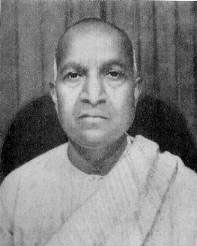
Bholanath Bhatt
Another pleasing instance of shuddha madhyam: sangata keenhe guniyana ki.
The long drawn out vilambit khayal, typically set in Ektala, has become the standard vehicle for raga expression today. Ramrang‘s composition pits him against the celebrated ‘Sadarang’ with their identical opening bols, mera mana bandha leeno re. The similarity stops there as the compositions differ significantly in all other respects. Jha-sahab‘s canvas is melodically and textually richer.
Shubha Mudgal parlays her guru’s composition.
The mere mention of Omkarnath Thakur is enough to send the fat into the fire. The shuddha madhyam is liberally courted in this play on Sadarang’s canoncial khayal, mera mana. Omkarnath (sometimes called “Ahamkarnath” for his not inconsiderable ego) steals the thunder from the Gods in this erumpent, high-voltage drama. He tops it off with the traditional mandara mana laye.
Vasantrao Deshpande‘s treatment is staid by comparison. The shuddha madhyam here is sparing.
In an interesting variation, Vasantrao drops the pancham altogether in a raga he brands Raj Kalyan. The relief-inducing nyasa on the pancham is missing, giving this raga a restive persona: araja suno. (Update: A reader sent feedback saying that Vasantrao thought of this raga as Marwa with a shuddha rishab. My description of it as “restive” is apposite in light of this for that is a deliberate effect Vasantrao seems to have aimed for.)
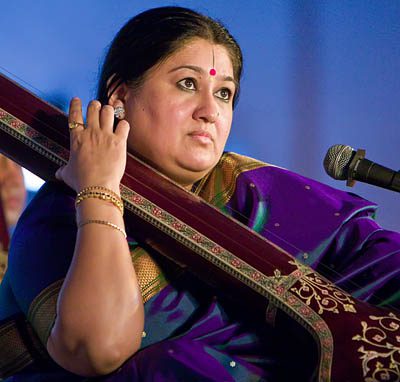
Shubha Mudgal
(© Rajan P. Parrikar)
Ulhas Kashalkar handles a bandish favoured by the Gwalior musicians, in Tilwada: jiya manata.
Faiyyaz Khan brings his imperial gayaki to bear on Yaman Kalyan as graceful meends and a judicious shuddha madhyam decorate this unpublished recording.
Dinkar Kaikini brings his own compositions – the vilambit, he mana kaise gaoon, is followed by the lithe matwari aaja hoon.
This rare item of the Agrawali Zohrabai singing the well-known cheez, piharva tihari comes with linear SRGmPDN runs.
The Rampur-Sahaswan statement from its distinguished representative, the late Nissar Hussain Khan. The traditional khayal, kaise ki, is followed with piharva tihari. Notice the explicit SRGm sargam beginning at around 8:02 into the clip.
A supreme master of the ‘big’ ragas, Bhimsen Joshi‘s is a powerful presence in this raga. He is not one to put much store by the textual content but he has an unerring sense of and respect for bandish structure. The shuddha madhyam-laden piyabina ratiya in Jhaptala is paired with the scintillating eri aali piyabina.
We turn to Gwalior.
Rahimat Khan (1852-1922), the second son of the Gwalior pioneer Haddu Khan, was among the most renowned musicians of India in his time. Some of the influential names impacted by his artistry include Abdul Karim Khan, Bhaskarbuwa Bakhale, Omkarnath Thakur and – much to the chagrin of dad Alladiya Khan – Manji Khan. Rahimat Khan‘s explosive tans are preserved in this invaluable archival recording published recently by HMV.
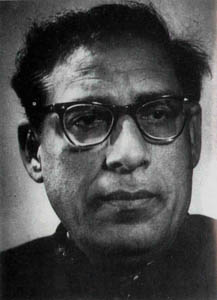
Amir Khan
The khayalnuma, a form where tarana bols are dressed up in khayal clothing, is a Gwalior specialty Sharatchandra Arolkar‘s rendition in vilambit Jhoomra is followed by the now-familiar piharva tihari.
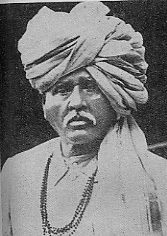
Rahimat Khan
The traditional cheez, langarva turaka jina chhuvo, comes alive in the pliant voice of D.V. Paluskar.
Interestingly, Jha-sahab sketches the same cheez with a small twist: he transposes the second word “turaka” to “tu kara.”
Jha-sahab has composed a jod (match) of the foregoing composition, co-opting its key phrases. Nachiketa Sharma gives an account: banwari na karo na karo.
Kashinath Bodas puts to good effect a composition of his guru Balwantrai Bhatt “Bhavrang”: sukha data sabana ke Shankara.
Kumar Gandharva always has an ace or two up his sleeve. Notice the soupçon of shuddha madhyam served with a khatka in his own composition: mukha tero karo.
Master Krishnarao places the sam on the tar saptaka shadaj in his composition rendered by Shaila Datar: preethama saiyyan lagi re.
Whenever you run a ‘big’ raga by Amir Khan he cannot help but erect a monument. In this unpublished recording the great man sings a khayal in vilambit Jhoomra, kajra kaise darun, which has its sam located on the mandra nishad, and follows it up with the breezy aiso sughara sundarava balamava.
Basavraj Rajguru emphasizes teevra madhyam in the earlier half of the clip, its solidity furnishing a contrast to the weak and circumspect shuddha madhyam.
A prized recording of the sarangi-nawaz Bundu Khan.
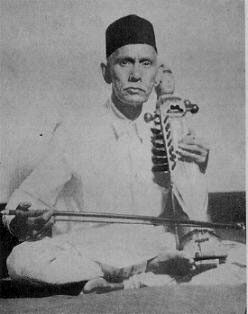
Bundu Khan
In this 1966 mehfil in Hyderabad, Bade Ghulam Ali Khan begins gingerly before warming up.
A couple of offerings from the Dagar dudes. First, Rahimuddin Khan Dagar‘s alap.
The resounding tones of Z.M. Dagar‘s rudra beena in this unpublished recording.
We pick up on a jhala in an old jugalbandi of Vilayat Khan and Mr. Alubhai Khan, the (naked) Emperor of San Rafael who has been resting on his oars for a few decades now.
Vilayat Khan and Bismillah Khan.
Nivruttibuwa Sarnaik, compelling as usual.
Kishori Amonkar‘s extended rendition of eri aali piya bina is severely enchanting, and there is perhaps no better elaboration of the chestnut on tape.
When queried about the shuddha madhyam in Kalyan’s midst, Kishori Amonkar is known to unload a great deal of hocus-pocus on the unsuspecting. In this tarana the first instance of M is around 1:41. Then at 2:02 comes an ungainly m-M slide.
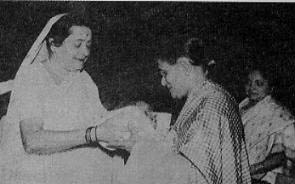
Kesarbai, Mogubai and Dhondutai
Mogubai‘s tarana is set in Gatala (15.5 beats), a tala designed by “Layabhaskar” Khaprumama Parvatkar. The story is told that Mogubai went through numerous takes without success and had to finally request Khaprumama’s presence in the studio to get through to her satisfaction.
Another Atrauli-Jaipur lady, Laxmibai Jadhav: eri eka najara.
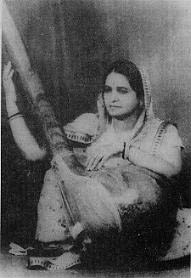
Laxmibai Jadhav
The crowning Atrauli-Jaipur offering – Mallikarjun Mansur. Like a hen on a hot girdle, he gets down to business in less than no time: beeta gaye.
Mallikarjun spins an old cheez for a round of hijinks: mukuta para vara ja’oon.
Mallikarjun Mansur did not mix his Yaman and Yaman Kalyan. The latter now, through the traditional bandish, pata tore kavana.
Any account of Yaman would remain incomplete if we didn’t acknowledge Vilayat Hussain Khan‘s popular and busy cheez, main vari vari ja’oongi. His colophon, ‘Pranpiya,’ is heard in the antara in this rendition by K.G. Ginde.
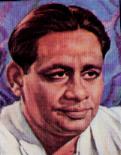
Pannalal Ghosh
We conclude the our Yaman adventure with the empyrean artistry of Pannalal Ghosh, the greatest Hindustani flautist of our times.
Acknowledgements
I cannot adequately discharge my debt to Romesh Aeri whose kindness in sharing his vast treasure of unpublished recordings has enriched this series immeasurably. My good friend, Sir Vish Krishnan, compiled much of the ‘light’ material. Ajay Nerurkar and Ashok Ambardar have always been at hand, ready to help.
The driving force behind this enterprise is Anita Thakur of the now-defunct SAWF (South Asian Women’s Forum) without whom none of this would have come to pass.
Part 1 | Part 2
